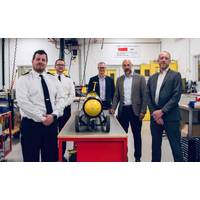
NOC and Royal Navy Renew MOU on Underwater Systems
The UK's National Oceanography Centre (NOC) has renewed a memorandum of understanding (MOU) with the Royal Navy, reinforcing a long-standing partnership in marine science and technology. The MOU, which includes collaboration with the Defense Science and Technology Laboratory (Dstl), the Ministry of Defense (MOD)’s science and technology organization, underscores a shared commitment to fostering innovation and advances in autonomous and robotic underwater systems.With expertise from NOC Innovations, the applied research and commercialization arm of NOC, the agreement will help enhance
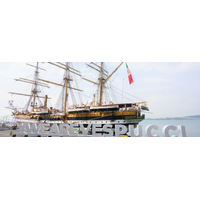
Singapore Trials IHO S-100 Aboard Italian Navy Training Ship
The International Hydrographic Organization - Singapore Innovation and Technology Laboratory (IHO-Singapore Lab) is conducting trials of next generation IHO S-100 standards and dual format Electronic Navigational Charts (ENCs) on a prototype S-100 ECDIS [2] aboard the Italian Navy's training ship, Amerigo Vespucci.This is known as the “dual fuel” mode within the international hydrographic community, where S-100 ECDIS supports both current S-57 and new S-101 ENC formats.This trial marks the first time that the dual format mode is used for navigation in the Malacca and Singapore Straits.
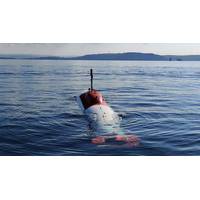
UK’s Test XLUUV Demonstrates Obstacle Avoidance Capabilities
underwater obstacle avoidance technology, as part of the first phase of the UK’s Defense and Security Accelerator’s (DASA) ‘Uncrewed Underwater Vehicle Testbed – Opportunity to Integrate’ competition, run jointly with the Royal Navy and the Defense Science and Technology Laboratory (Dstl).Vigilant, developed by Wavefront and manufactured and commercialized by Sonardyne, is a navigation and obstacle avoidance sonar for ships, uncrewed surface vessels (USVs) and underwater vehicles. It provides crews with automated long-range detection of objects in the water column,

Global Hydrographic Innovation and Technology Laboratory Established in Singapore
Singapore and the International Hydrographic Organization (IHO) have launched the Joint IHO-Singapore Innovation and Technology Laboratory.The Laboratory seeks to optimize the resources of IHO Member States to harness and develop emerging technologies in the hydrographic domain that support safe maritime navigation and the protection of the marine environment. In accelerating innovation in the field of hydrography, the Laboratory aims to:Conduct research and testing of projects proposed by IHO Member States, IHO organs and other stakeholders; Grow knowledge and foster collaboration on global
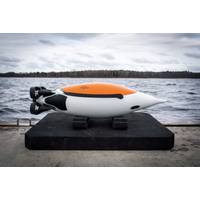
MTR100: When it Comes to Drones, Big is Good. <1m is Better.
now 50-60 out in the wild with various payloads, says Terry Sloane, managing director at parent company Planet Ocean. Customers spread from Africa to Japan include Plymouth Marine Laboratory and Dalhousie University.The company was set up in 2015 and has had Innovate UK and Defence Science and Technology Laboratory (UK MOD) funding and has collaborated with the Marine Autonomous Robotics Systems Group at the UK’s National Oceanography Centre.Its now commercial ecoSUBµ5 Micro-AUV is 92cm long, 4 kg in air, rated to 500 m depth, and able to operate for 12-20 hours (depending on battery type)
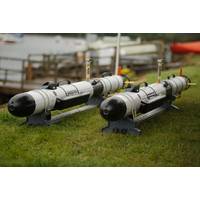
Sonardyne, SeeByte Advance UMS Navigation and Autonomy
Sonardyne and SeeByte won a UK Defense Science and Technology Laboratory (Dstl) funding to enhance and extend the future operational capability of autonomous and remotely operated systems in battlespace domains.The collaboration is the phase two of the UK’s Defence and Security Accelerator (DASA)’s Autonomy in Challenging Environments competition and builds on the work both organizations undertook in Phase 1.Sonardyne underwater positioning system will be teamed with SeeByte’s adaptive, communication-aware, robotic behavior developed for its autonomy system Neptune to allow the UMS
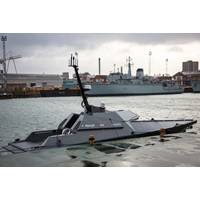
UK Navy Experimenting with New Autonomous Vessel
, new payloads and the role that a USV can play in complex operations and within the future fleet," said Commander Antony Crabb, NavyX team leader.The vessel is derived from technology firm L3Harris’ Mast-13 vessel, which for the past 18 months has been operated by Defense Science and Technology Laboratory (Dstl) on a series of trials with the Royal Navy. The Royal Navy said Mast-13 proved the value of USVs during experimentation in Norway last year when it was integrated with HMS Albion for Autonomous Advance Force 3.0. There it was controlled remotely, including for the transit in and
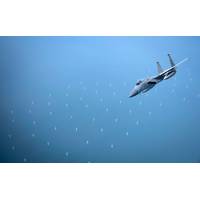
UK Gov't Sets Aside $5M for Tech That Can Mitigate Offshore Wind Farms Impact on Radar Systems
to, or alterations to the design of, the wind turbinesalterations to the initial radar signal or radar station or processing of the returnThe competition is funded by the BEIS Net Zero Innovation Portfolio and is undertaken in partnership with the Royal Air Force (RAF), the Defence Science and Technology Laboratory (Dstl), and DASA.In the first phase DASA awarded contracts to Thales, QinetiQ, Saab, TWI and Plextek DTS to fast-track their ideas for technologies that can mitigate the impact of wind farms on the UK’s air defense radar system.Suppliers can take part in Phase 2 of the competition if
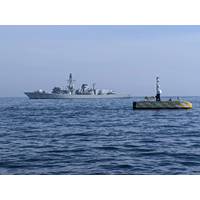
Autonomous Navigation – with or without GNSS
sum of its individual parts.The theory is good and the system is proven onboard ROV and AUV systems globally; from the most demanding survey ROV operations to long-range AUVs. But how easy is it to deploy on a USV?Defense demonstratorActually very easy. Last year, through a UK Defence Science and Technology Laboratory (DSTL) and Defence and Security Accelerator (DASA) funded demonstration, we worked with USV manufacturer SEA-KIT to demonstrate SPRINT-Nav capability onboard a USV.We installed the system on a gondola on the 12m-long SEA-KIT X class USV, and tested it against the local real-time kinematic


 February 2025
February 2025





